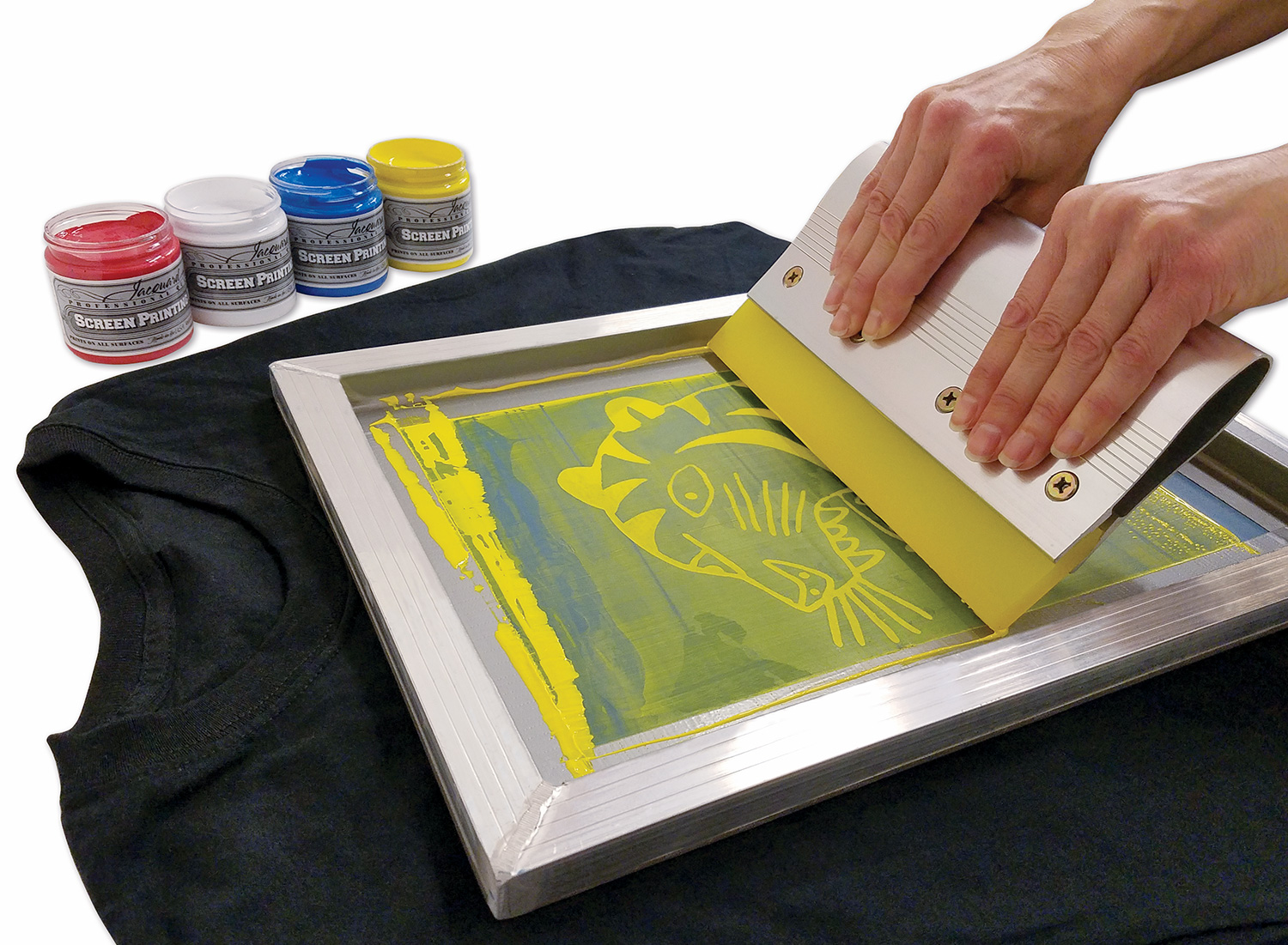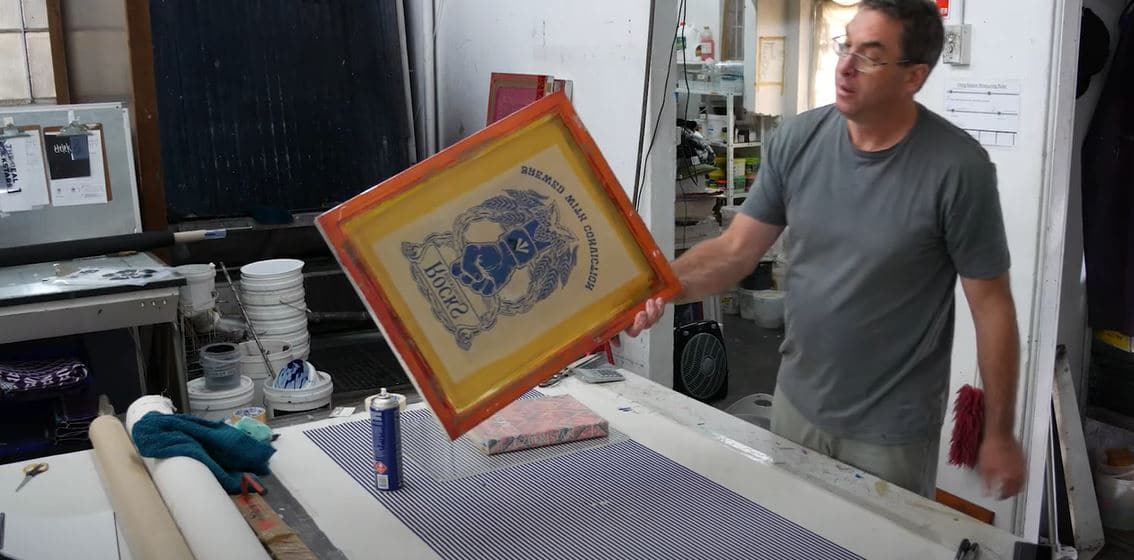ChatGPT said: How 10:9 Design Screen Printing can elevate your event presence
Wiki Article
Discover the Different Sorts Of Screen Printing Techniques for Your Following Project
Screen printing provides a diverse variety of techniques that can enhance any creative project. From conventional techniques like serigraphy to modern-day innovations such as direct-to-garment printing, each approach has its unique benefits. Specialized alternatives, including environment-friendly and metal inks, introduce a lot more possibilities. Recognizing these strategies can greatly affect the last end result. The difficulty lies in selecting the most ideal technique for specific requirements and desired impacts. What aspects should one consider?
The Fundamentals of Screen Printing
Although screen printing might appear complex, it is essentially a simple process that entails transferring ink via a mesh screen onto different surface areas. The technique starts with the creation of a stencil, which specifies the layout to be printed. This pattern is affixed to a mesh screen, usually constructed from polyester or nylon. Once the pattern remains in place, ink is related to the screen and pressed through the mesh making use of a squeegee, causing the desired pattern being printed on the underlying product.Screen printing can be executed on a variety of substrates, including textile, plastic, and paper, making it a functional selection for various jobs. The process enables for elaborate layouts and vivid colors, making it prominent in markets such as style, art, and marketing. Recognizing these basics equips individuals with the foundational knowledge required to explore more advanced techniques in screen printing.
Traditional Screen Printing Techniques
Traditional screen printing techniques have been employed for centuries, preserving the workmanship and virtuosity of this technique. This technique uses a mesh screen to transfer ink onto a substrate, such as fabric or paper, permitting resilient and vivid styles. The procedure starts with creating a stencil, which obstructs certain areas of the screen to regulate where the ink will be applied.One preferred method is serigraphy, frequently made use of for minimal editions and imaginative prints. Another is using water-based inks, which are environment-friendly and provide a soft feel on fabrics - 10:9 Design Texas. In addition, conventional techniques can consist of manual printing, where artisans use ink with a squeegee, guaranteeing accuracy and attention to detail
These methods continue to be valued in the industry for their tactile top quality and the special appearances they generate, appealing to both customers and developers that value the heritage of screen printing.
Digital Screen Printing Innovations
As the need for faster production and personalization in the printing market has actually surged, digital screen printing advancements have actually arised as a game-changer. This technology blends standard screen printing approaches with electronic procedures, enabling rapid prototyping and elaborate styles that were formerly hard to achieve. One significant improvement is the intro of direct-to-garment (DTG) printing, which assists in premium, full-color prints on numerous fabrics without the requirement for displays. Furthermore, improvements in ink formulations have led to eco-friendly alternatives that keep vivid colors while minimizing environmental influence. The use of automated systems further streamlines production, lowering labor prices and enhancing accuracy. These advancements not just accommodate little set orders and tailored layouts but additionally permit quicker turnaround times, making them optimal for services focused on conference client needs in a hectic market. Digital screen printing, as a result, represents an essential development in the domain of printing methods.Specialized Screen Printing Approaches
Checking out specialty screen printing techniques reveals a varied array of techniques that press the boundaries of creative thinking and functionality in the printing sector. Amongst these, glow-in-the-dark inks give a special aesthetic result, making layouts come alive in low-light problems. Metallic inks, known for 10:9 Design Embroidery their sparkling coating, include a touch of luxury to published materials. An additional cutting-edge approach is discharge printing, which removes color from the material instead of adding ink, resulting in a soft, classic feeling. High-density printing produces a raised texture externally, boosting responsive involvement. Furthermore, water-based inks are gaining popularity for their lively colors and reduced environmental effect. Each of these specialty strategies deals with details style needs, enabling brand names and artists to create standout products that reverberate with their audiences. By leveraging these techniques, businesses can elevate their screen printing tasks to brand-new elevations, making certain remarkable impacts.Eco-Friendly Screen Printing Options
Environment-friendly screen printing choices are obtaining grip as the market moves towards sustainability. Sustainable ink options and using eco-friendly materials are crucial elements in decreasing the environmental influence of the printing process. By adopting these practices, screen printers can contribute to an extra sustainable future while keeping high-grade results.Sustainable Ink Selections

Biodegradable Materials Usage
As the screen printing sector develops, the incorporation of biodegradable materials is becoming increasingly important for eco mindful techniques. Manufacturers and designers are now checking out inks and substrates made from natural, renewable sources that break down much more successfully than standard counterparts. These eco-friendly options lower plastic waste and decrease environmental effect, lining up with the growing need for lasting products.
Usual examples include water-based inks and natural cotton fabrics, both of which decrease dangerous chemicals and promote eco-friendliness. Brands that take on these materials usually boost their market charm, bring in customers that focus on sustainability. As recognition of environmental concerns proceeds to rise, the change towards eco-friendly materials in screen printing is most likely to gain momentum, promoting a greener sector standard.
Choosing the Right Technique for Your Job
Exactly how can one establish the most appropriate screen printing method for a specific task? The choice depends upon numerous variables, including the material to be printed on, the intricacy of the style, and the preferred manufacturing quantity - 10:9 Design Screen Printing Texas. Direct-to-garment printing is ideal for complex designs with many shades, while traditional screen printing succeeds for larger runs of easier graphics.
In addition, consideration of the end-use of the printed thing is essential. For outside applications, strategies that provide longevity and weather resistance, such as plastisol ink, might be favored. Conversely, environmentally-conscious jobs may gain from water-based inks or biodegradable materials.
Inevitably, comprehending the task's unique requirements permits an enlightened selection, ensuring both visual appeal and practical durability. By examining layout intricacy, product compatibility, and production range, one can effectively select the most proper screen printing strategy to meet their project's goals.
Often Asked Concerns
What Is the Background of Screen Printing?
Screen printing came from in old China around 1000 ADVERTISEMENT, evolving through Japan and Europe. By the 20th century, it ended up being prominent in industrial art and fashion, transforming how designs were produced and distributed worldwide.
Exactly how Do I Prepare Art Work for Screen Printing?
To prepare artwork for screen printing, one have to ensure high resolution, make use of an appropriate shade mode, create separate layers for each and every color, and transform text to details, ensuring compatibility with the printing procedure and wanted result.What Products Are Best for Screen Printing?
The very best products for screen printing include top notch inks, resilient displays, and suitable substrates like cotton, polyester, or blends. In addition, using suitable solution and mops can enhance the printing process and outcomes.Can I Screen Print in your home?
Yes, screen printing in the house is feasible. With the right materials, configuration, and strategies, individuals can produce high-grade prints. Cautious factor to consider of work area and equipment is vital for effective outcomes.What Are Typical Blunders in Screen Printing?
Typical blunders in screen printing consist of inappropriate exposure times, poor ink uniformity, misalignment of screens, not enough cleaning of products, and ignoring to test prints. These mistakes can jeopardize the quality and accuracy of the end product.Screen printing might seem facility, it is essentially an uncomplicated procedure that involves moving ink through a mesh screen onto numerous surfaces. As the need for faster production and personalization in the printing industry has actually surged, digital screen printing innovations have actually emerged as a game-changer. Checking out specialty screen printing methods reveals a diverse array of techniques that push the boundaries of creativity and functionality in the printing market. The finest products for screen printing include premium inks, resilient screens, and ideal substratums like cotton, polyester, or blends (10:9 Design Embroidery). Usual mistakes in screen printing include improper exposure times, insufficient ink consistency, misalignment of displays, not enough cleaning of materials, and ignoring to examine prints
Report this wiki page